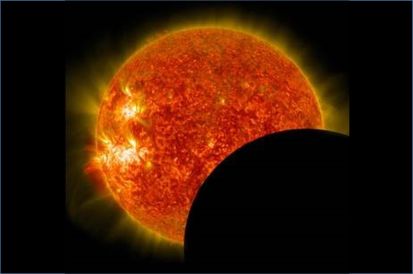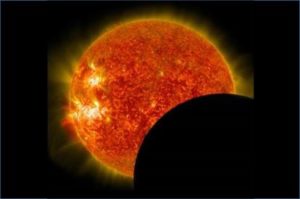
NASA providing safety tips and live TV coverage of Aug. 21 solar eclipse

For the first time in 99 years, a total solar eclipse will occur across the entire continental United States, and NASA is preparing to share this experience of a lifetime on Aug. 21. Viewers around the world will be provided a wealth of images captured before, during, and after the eclipse by 11 spacecraft, at least three NASA aircraft, more than 50 high-altitude balloons, and the astronauts aboard the International Space Station – each offering a unique vantage point for the celestial event.
NASA Television will air a multi-hour show, “Eclipse Across America: Through the Eyes of NASA,” with unprecedented live video of the celestial event, along with coverage of activities in parks, libraries, stadiums, festivals and museums across the nation, and on social media.
From Oregon to South Carolina, 14 states will – over a span of almost two hours – experience more than two minutes of darkness in the middle of the day. When the moon completely blocks the sun, day will turn into night and make visible the otherwise hidden solar corona, the sun’s atmosphere. Bright stars and planets also will become visible. Using specialized solar viewing glasses or other equipment, all of North America will be able to view at least a partial eclipse lasting two to four hours.
“Never before will a celestial event be viewed by so many and explored from so many vantage points – from space, from the air, and from the ground,” said Thomas Zurbuchen, associate administrator of NASA’s Science Mission Directorate in Washington. “With our fellow agencies and a host of scientific organizations, NASA will continue to amplify one key message: Take time to experience the Aug. 21 eclipse, but experience it safely.”
The only safe way to look directly at the uneclipsed or partially eclipsed sun is through special-purpose solar filters, such as eclipse glasses or handheld solar viewers. Homemade filters or ordinary sunglasses, even very dark ones, are not safe for looking at the sun. In the 70-mile-wide swath of the country that will experience a total eclipse, it’s safe to look at the total eclipse with your naked eyes only during the brief period of totality, which will last about two minutes, depending on your location.
- For more information on viewing safety, visit: https://eclipse2017.nasa.gov/safety
- To watch the Aug. 21 NASA TV eclipse broadcast online and access interactive web content and views of the eclipse from more than 60 telescopes, aircraft and balloons, visit: https://www.nasa.gov/eclipselive
Written by: Ace News Today Staff / Source: Nasa.gov






